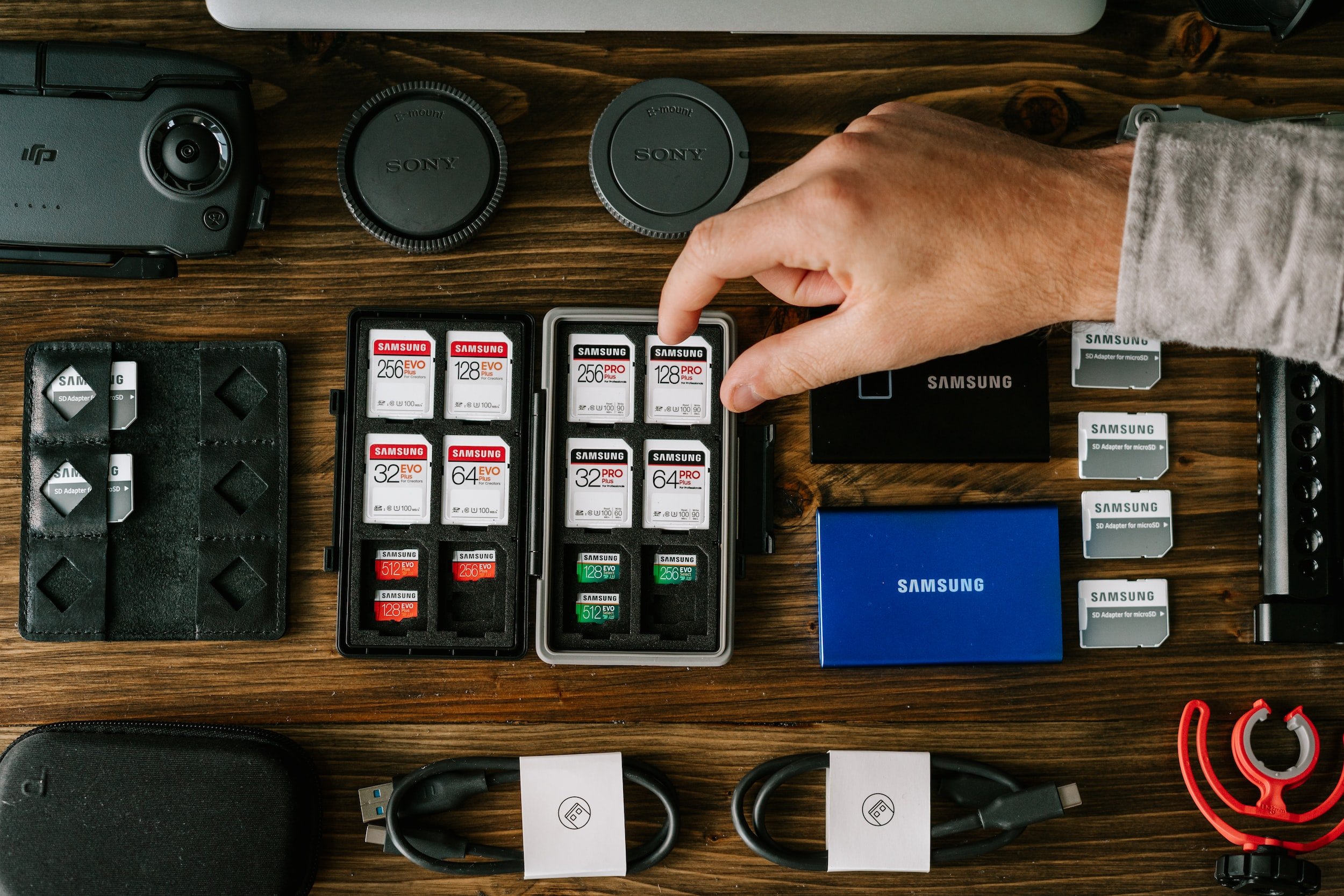Memory Cards….the 2nd most important thing in your gear bag!
Memory Cards
After your camera - it’s the most important thing in your gear bag! Do it right! If you are barely staying afloat in the sea of technology, skip the geek out sections. If you’re techie and want more, those sections are for you.
As a photographer one of the most important things in our gear bag (after the camera of course) is our memory cards. Because of this you need to treat the cards with care as you would your camera body. That is the focus of this month’s topic.
What to look for when you buy a memory card:
Buy from a reputable shop. I know we all do lots of shopping at Amazon, but there are many reports of people buying well established brand cards like Sandisk and Lexar and Sony from Amazon and having the cards fail. Many of these can be black market cards. The only time I ever bought a card off of Amazon, they failed on the second use of the card.
Read/write speed: Check what the speed of the card is. If you are shooting sports or wildlife, you will want a fast card. If you have lots of images from events such as weddings or party or volume school/sports, you will want a fast card. The card speed impacts the writing of the image as well as the tranferring of the images to the computer.
Capacity: Buy a card that is more than large enough for one photo shoot. If you are shooting family portraits, you probably do not need to buy a 256 GB card.
You can look into the read write speed that your camera can handle. Using a search engine, search “ {camera model} memory card speeds” and you will find the max speed your camera can handle. No reason to spend money on the fastest card if your camera can’t handle it. (a search might be “nikon z6ii memory card speeds”. )
What to do you when you get your new card
Format the card IN the camera. Yes, even if it’s brand new and there is nothing on the card.
Format for each camera (so if you pre-formatted for camera 1 but use it in camera 2, you have to reformat). I will preformat my cards but note which camera they are for. By “pre-format” I mean that I will format all the cards I have that are no longer being used for a client. I will format them in the appropriate camera and then store them in a card wallet/holder so that I can just grab and go.
When you format a memory card, the camera is deleting files and folder structures and then writing the folder structures that the camera uses. This ensures a more efficient writing of your images to minimize problems with your card. Each camera has it’s own folder structure (even in same brand but different model). This is why you have to format the card in the camera it will be used in. If you don’t, it will often still work but this is one of the risk areas that will cause your card to corrupt down the road and you will have no idea why.
Memory Card Speed
There is a speed at which your photos are record in your camera.
There is also a speed at which you can transfer the files. That speed is determined by
The card
The card reader
The cable for the card reader
The port on the computer/laptop (usb 3.0, usb 3.2, usb-c, thunderbolt)
The computer specs
The software you use to copy the files to your computer.
This in itself can be it’s own blog topic so I won’t go into all the details. The two things you can look at are card speeds and whether it’s USB 3.0 or 3.2 or USB-C or Thunderbolt (fastest!). I mention all these parts so that if you are finding that the speed of transferring your files seem slow, there are about 6 different factors that impact that speed. So if you need to get help, you have to know the details of all 6 parts.
Have you ever lost photos from a photoshoot? The steps below help give you insurance to still have your original files.
After your photoshoot….
Remove the card from the camera and transfer the images with a card reader (ALWAYS) not the USB cable of the camera to your computer.
Put card in envelope or card holder until job is delivered and client is happy (for me that could be 2-4 weeks for sports job). This is why I suggest getting memory cards that are as big as your job is. Then you won’t be tempted to keep reusing the card to use up the space. If you’re a sports photographer like me, you go through 128GB and 256 GB cards like crazy using up to 6-8 per job (for a 3 day sports event).
Eject the card from the card reader using the computer software.
How to store and care for card
Flat so that it doesn’t bend
Keep dry/cool
Don’t touch contacts.




